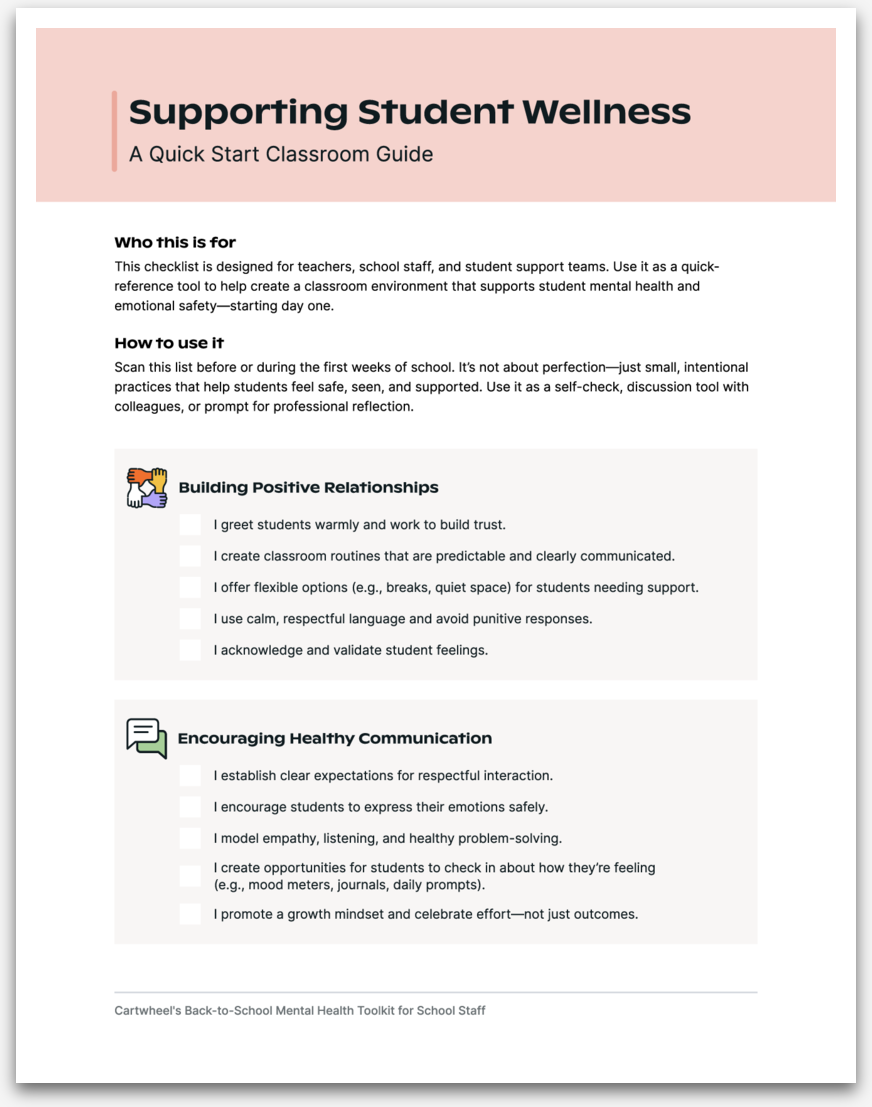Around one in every four or five teens will engage in non-suicidal self injury (NSSI), with rates for adolescent girls more than twice the rates of boys. However, due to the stigma surrounding mental health and young people's understandable reluctance to confide in adults, few teens disclose it.
To better understand NSSI, we spoke with clinical psychologist Dr. Taylor Burke, an Assistant Professor at Harvard Medical School and the Associate Director of Suicide Research in the Division of Child and Adolescent Psychiatry and co-director of the Mood and Behavior Lab at Massachusetts General Hospital.
Read on to learn what puts certain youth and young adults at risk for NSSI and how to prevent negative outcomes. You can also watch the full webinar here.
What is Non-Suicidal Self Injury?
To understand NSSI, it is important to also outline suicidal ideation and suicidal behavior—two very different but related types of thoughts and behaviors.
- Suicidal ideation refers to thoughts about ending one's life.
- A suicide attempt is an act of self-injury with at least some intent to die as a result of the self-injury.
- Non-suicidal self-injury is the deliberate and direct injury to one's own body without any associated intent to die as a result of that behavior.
The most common methods of non-suicidal self-injury include self-cutting or scratching of the skin and hitting, biting or punching oneself, Dr. Burke shared.
Understanding the Functions of NSSI
Dr. Burke uses a four-factor model to explain the reasons behind NSSI. This model suggests that NSSI can serve four main purposes depending on two key factors. She notes that most youth report more than one function of their NSSI, and it can change from episode to episode or over time.
Automatic negative reinforcement means that a child is using NSSI to reduce or escape from intense, uncomfortable emotions. For example, a young person might feel overwhelming anxiety and discover that self-injury temporarily relieves that feeling.
Automatic positive reinforcement is when a child engages in NSSI to create a feeling, sensation, or state that they're not currently experiencing. This could mean using self-injury to feel something other than emotionally numb or disconnected.
Social negative reinforcement is where NSSI is used to avoid or escape from unwanted social situations or demands. So this might occur when a young person feels overwhelmed by interpersonal conflict or expectations and uses self-injury to avoid confrontation.
Social positive reinforcement involves engaging in NSSI to gain care and support from others. It reflects a need for connection and validation that they might not know how to seek in healthier ways.
“Understanding the functions of NSSI or why it's helpful to a child moves us away from judgment and towards compassion,” Dr. Burke shared. “So instead of asking, ‘why would they do this?’ we can instead think, ‘what are they trying to achieve with this behavior’.”
Recognizing the Risk Factors
“Adolescence is generally a period of transition, which means it can be inherently stressful for teens to navigate,” Dr. Burke explained. “Changes related to puberty may make individuals more emotional, more responsive to stress. They are also more vulnerable to mental health problems that can put them at greater risk for non-suicidal self-injury.”
While NSSI and suicidal ideation are distinct behaviors, Dr. Burke was careful to note that they can co-exist. “It’s helpful for parents, counselors and educators to be aware of the potential consequences for engaging in NSSI, and what it might lead to,” she shared. “About 40 to 70% of those with a non-suicidal self-injury history report having attempted suicide. And among those with a suicide attempt history, 66% report having previously engaged in NSSI.”
Additional factors that put children and adolescents at greater risk for experimenting with or chronically engaging in NSSI:
- Female gender identity
- LGBTQI+ identity
- Early life trauma including abuse
- Difficulty in regulating emotions
- Low parent support / high parent-child conflict
- Peer influences such as bullying
Talking to Teens about NSSI
While positive conversations about NSSI can reduce distress and open pathways to care, few young people disclose it. According to a 2020 study, only 8–15% of young people open up about their NSSI to a counselor or healthcare provider, and only 15–30% tell their parents.
Dr. Burke surveyed 1,000 teens with a history of NSSI. The number one reason teens did not open up about NSSI to a mental health provider, including school counselors or doctors, was because they feared the provider would tell their parents, Dr. Burke said.
“[Survey respondents] were ashamed or embarrassed, and thought their provider would assume that they were going to kill themselves even though they weren't. Teens are very concerned that parents learning about how they're feeling is going to make them really, really upset. So in a lot of ways, these teens are wanting to protect their parents.”
“It is crucial to know that asking about suicide does not make people have suicidal thoughts. By validating their emotional experiences, you aren't telling them that you think that this behavior is good behavior,” Dr Burke shared. “You're telling them that they make sense to you.”
Key takeaways:
- Recognize, process and regulate your emotions prior to the conversation.
- Choose a quiet moment and minimize distractions.
- Share your observations in a non-confrontational way and ask open questions about how they are feeling.
- When asking about NSSI, be clear and direct.
- Calmly provide validation and support, without judgement.
Connecting to Care
Dr. Burke recommends against restricting teens’ access to friends, places or things after disclosure of self injury. In her survey, respondents said they felt like they were being punished, even if parents were just trying to keep them safe. Instead, keep the conversation going. “Learning more will be crucial in helping you to assess their risk and deciding if getting a mental health provider involved is necessary,” Dr. Burke shared.
Generally, effective interventions for youth suicide and self-harm do include a family component, she adds. “Parents are crucial in making sure a teen is safe and so I think if your child is at risk and you're getting them treatment, you really want to make sure that you're going to be involved in the plan.”
While it’s important that the mental health provider who initiates evidence-based treatment works through a thorough assessment, skill building is a good starting point. “NSSI often is engaged because youth lack effective tools to manage their emotions or stress. Skill building focuses on equipping youth with healthier ways to cope,” Dr. Burke shared.
Looking at the bigger picture, it is important to remember that NSSI is a risk factor for suicidal behaviors. “It really is necessary to assess for suicide risk, particularly as a parent or a counselor, Dr. Burke shared. She recommends coming up with a safety plan to help kids recognize warning signs, employ coping strategies and seek support.
“I think it's always a really good idea to review how to contact a crisis safety line,” Dr. Burke concludes. “If a child can't access a safe individual to talk to, or if it's in the middle of the night and they don't want to wake anyone up … make sure that they have this number saved in their phone.”
Additional Resources
The 988 Suicide & Crisis Lifeline
Virtual Hope Box for Apple and Android
The Columbia Suicide Severity Rating Scale (for mental health providers)
Ask Suicide Screeening Questions (for mental health providers)
Sometimes kids and teens need additional support, and that’s perfectly OK. This is where therapy can be helpful. Having your child meet with a professional can help them learn additional ways to cope with struggles they may be having. Parents and caregivers can also benefit from education and support on ways to support their kids. This can be a powerful way to help kids build resilience.
Related: When and How To Seek Mental Health Support For Your Child
Check with your child’s school to see if they partner with Cartwheel or another mental health provider to get started. You can also watch our webinar on understanding non-suicidal self injury for more tips.




%201.png)
